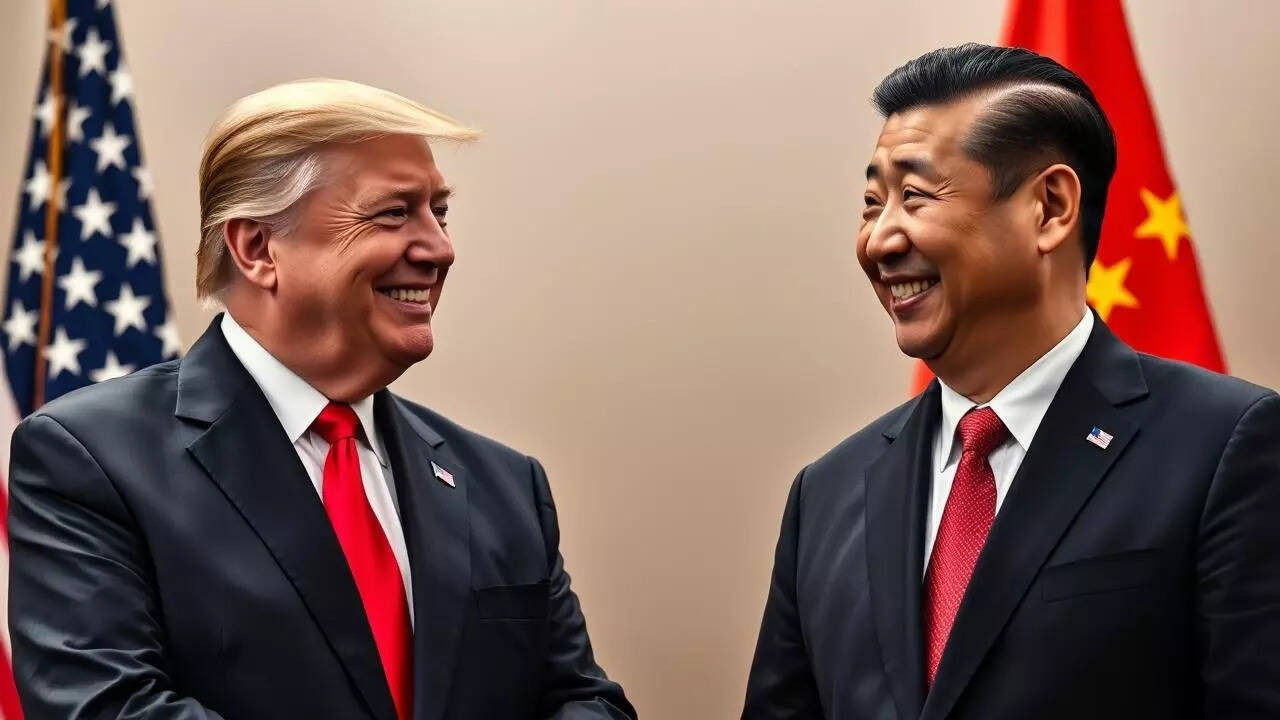In Stockholm, China and the United States decided to maintain existing tariff arrangements, extending the pause after constructive talks. The US will keep its 30% levy on Chinese imports, while China continues its 10% duty on American goods.
The US-China Trade Truce: A Sigh of Relief, But For How Long?
The economic world collectively held its breath, and then, a somewhat relieved exhale. The much-anticipated, or perhaps dreaded, expiration of certain US tariffs on Chinese goods has come and gone, leaving them… in place. The pause button has been hit on further escalation, but the existing levies remain a very real, and often contentious, part of the economic landscape. This extension, following what both sides are calling “constructive discussions,” suggests a fragile equilibrium in the complex dance that is US-China trade relations.
So, what exactly does this “pause” mean for businesses and consumers? Let’s break down the key takeaways.
Unpacking the Tariff Truce
Forget visions of tariffs vanishing overnight. The reality is far more nuanced. The tariffs implemented under Section 301 of the Trade Act of 1974, those that sparked so much global angst, are still in effect. This means that a significant swathe of Chinese imports continue to face extra taxes when entering the US. We’re talking about tariffs on everything from electronics and machinery to textiles and everyday consumer goods. These aren’t small numbers either; the tariffs impact hundreds of billions of dollars worth of goods.
The taxes that will continue for now include some of the most impactful:
* 25% tariff on approximately $50 billion worth of Chinese goods: This initial wave targeted industrial goods, aiming to address concerns about intellectual property theft.
* 25% tariff on an additional $200 billion worth of goods: This expansion broadened the scope to include a wider range of products, further intensifying the trade tensions.
* 7.5% tariff on roughly $120 billion worth of goods: This later round of tariffs was initially higher but was reduced as part of earlier negotiations.
The decision to maintain these tariffs reflects the ongoing complexities in the US-China relationship. While both nations acknowledge the need for stable trade relations, significant sticking points remain. These include issues like intellectual property protection, market access for American companies in China, and concerns about unfair trade practices.
Why the Stalemate on China Trade Continues
The reasons behind the extended pause are multifaceted. On one hand, both countries likely recognize the potential economic fallout of further escalation. The global economy is already facing headwinds from inflation, supply chain disruptions, and geopolitical instability. A full-blown trade war could exacerbate these problems, hurting businesses and consumers on both sides of the Pacific.
On the other hand, neither country seems willing to concede ground on key issues. The US remains concerned about China’s trade practices, while China seeks greater access to the US market and a removal of what it views as discriminatory trade barriers. Finding a compromise that satisfies both sides is proving to be a formidable challenge. As discussed in a previous article on navigating global supply chain disruptions, geopolitical factors continue to play an outsized role in economic decisions.
What’s Next for the US-China Relationship?
Predicting the future of US-China trade relations is a tricky game. The “constructive discussions” mentioned by both sides suggest a willingness to engage, but the path forward remains uncertain. Several factors could influence the direction of the relationship:
* Geopolitical events: Unexpected events, such as heightened tensions in the South China Sea or further developments in the Russia-Ukraine war, could easily derail trade negotiations.
* Domestic political considerations: Both the US and China face internal political pressures that could affect their trade policies.
* Global economic conditions: A sharp downturn in the global economy could prompt both countries to seek ways to de-escalate trade tensions.

For businesses, this uncertainty underscores the importance of diversifying supply chains and exploring alternative markets. Relying too heavily on a single source of supply can leave companies vulnerable to trade disruptions. The ongoing China trade dynamic highlights the need for agility and adaptability in a rapidly changing global environment. It also might be a good time to re-evaluate risk management strategies and proactively prepare for different scenarios.
The Waiting Game: For How Long?
The current state of affairs is a holding pattern. While the pause in tariff escalation provides a degree of stability, it’s far from a permanent solution. Businesses and consumers will continue to bear the costs of the existing tariffs, and the risk of further escalation remains a looming possibility. The hope is that the “constructive discussions” will eventually lead to a more comprehensive and lasting agreement. But until then, the world watches and waits, hoping for a resolution that benefits all.







